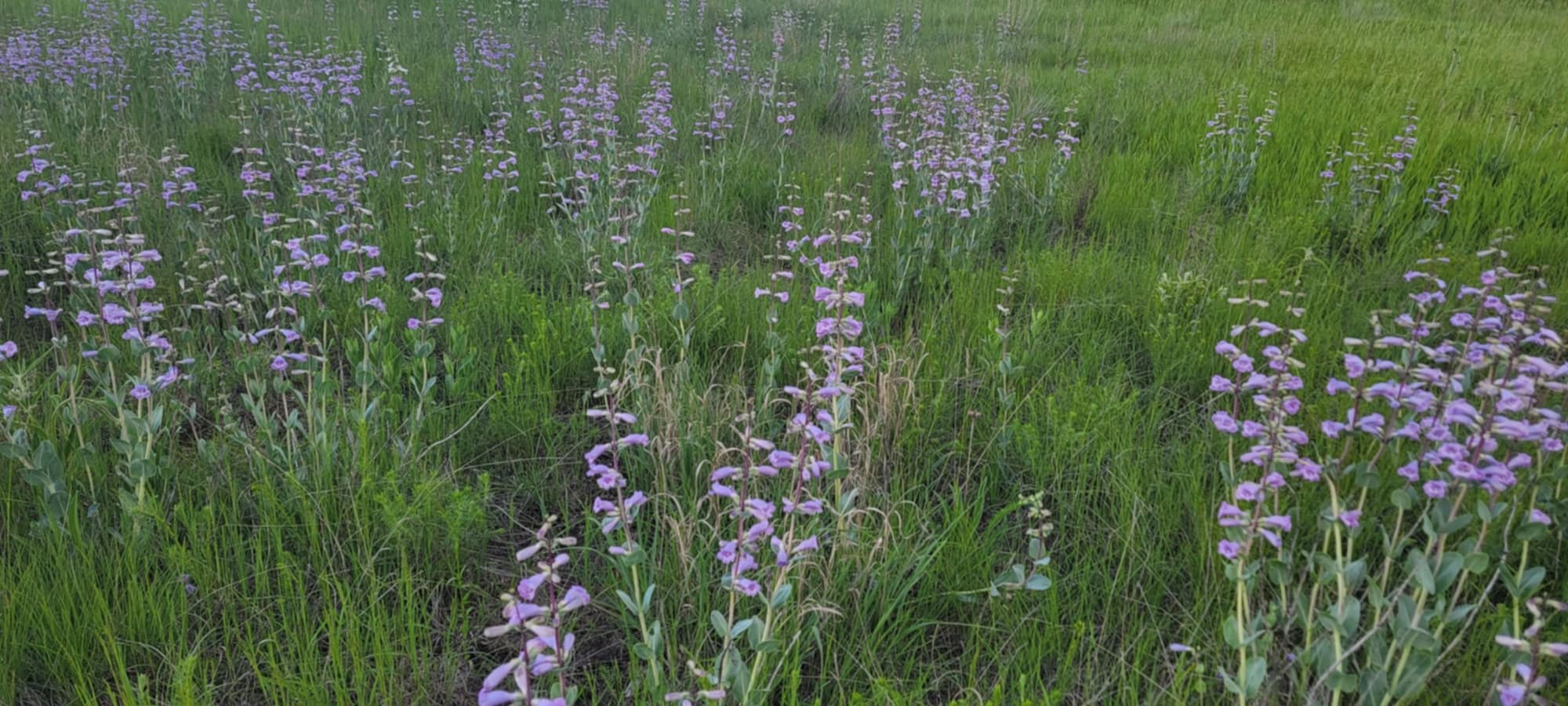Katie Byerly of Cerro Gordo County is also known as Iowa Prairie Girl on YouTube.
I participated in the first annual “LoHi” Loess Hills organized hike in 2021. During that adventure in the western hills of Iowa, many of us learned to shout out PENSTEMON GRANDIFLORUS!!! when someone spotted a Large-flowered Beardtongue.
Doug Chafa, one of our group leaders, taught us this. He learned it from a college professor. I wonder who taught her. She sounded like someone I would have loved to explore a prairie with. Walking the land, all the while shouting out wildflower names with excitement and enthusiasm.
I’m not good at using the scientific names of plants. I understand their importance, but I prefer the common names—or better yet, the not-so-common names. The name somebody’s great great (great?) grandmother called it centuries ago.

Large-flowered Beardtongue has a few more common names. In their book Wildflowers of the Tallgrass Prairie, Sylvan Runkel and Dean Roosa list these: shell-leaf penstemon, wild foxglove, showy or pink beardtongue and Canterbury bells. I’m guessing the last one came from a pioneer settler who missed his mother’s gardens back home in Europe.

So when I passed this beautiful patch of purple flowers one evening on a two-lane county road, I yelled “Penstemon Grandiflorus” (to myself) and found the closest farmer’s right of way to turn around in. This amazing grouping of Large-flowered beardtongues is in a restored ditch in Cerro Gordo County. It was a peaceful summer evening on June 1, and I was alone but very much at home with these charming jewels.

Grandiforus means large-flowered. However, the two-inch flowers are light and fragile.

They also have dark purple “landing strips” for attracting and guiding insects. I love this about wildflowers!

Many bumblebees were sharing this flower patch with me that evening.


Each large-flowered beardtongue plant holds many flowers. Although each bloom will last for only few days, the whole plant will be in bloom for about three weeks. The flowers form in clusters around the plant’s main stem and the leaves.

The grayish green or bluish green leaves and calyx complement the light purple flower perfectly. Image #9

From my observations, the flowers at the bottom bloom first and the last to bloom is the flower at the very top of the plant.

Penstemon means beardtongue. Runkel and Roose explain that this name comes from one of the five stamens being sterile and hairy, resembling a “bearded tongue.” Here is a close up look at the inside of the flower.

I think I might enjoy the blue-green waxy leaf of the beardtongue more than the flower. The leaves grow opposite of each other on the stem, with no stem of their own.

Clasping leaves are my favorite.

Everything about this plant is lovely—even its cute teardrop-shaped seed capsule. It too has a waxy sheen.

It reminds me of something from a Dr. Suess book. The tiny seeds are dispersed by the wind.

I don’t know whether Doug’s college professor is still alive. If she is, she would be elderly. What I do know: her enthusiasm lives on in her students, and from her students to their students, and now from me to you. PENSTEMON GRANDIFLORUS, everyone!




1 Comment
Thanks, Katie and Laura!
Lovely photos! And I’ll bet some other readers will also appreciate Wildflower Wednesdays even more between now and November.
PrairieFan Mon 1 Jul 3:01 PM